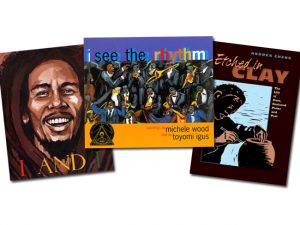February is Black History Month. The origins of Black History Month began with historian Carter G. Woodson launching Negro History Week in 1926. Woodson felt that teaching African American history was essential for the survival of the African American race.
In 1969, students at Kent State University proposed expanding Black History Week to Black History Month. The first Black History Month was celebrated a year later. In 1976, Black History Month was recognized by the federal government and has been celebrated ever since.
Today, heritage months can be a double-edged sword. On one hand, relegating culturally diverse books to specific months of the year can mean these books are overlooked the rest of the year. It can also separate Black history from American history, when in fact black history is American history.
On the other hand, we are still working to undo a long history in which the achievements and contributions of people of color were routinely ignored. Having a special time of year to highlight these achievements can help fill in the gaps in our history.
Our opinion? Black History Month isn’t a time for once-a-year books; the books you use this month should be in your regular rotation. But Black History Month is a good time to give your collection of African American titles a little extra love–or updating, if it needs it.
LEE & LOW is proud to offer a number of different Black History Month collections. Check them out below:
 Black History Month Collection, Grades K-2
Black History Month Collection, Grades K-2
This paperback collection features a mix of historical fiction and biographies from African Americans who excelled in arts and politics for young readers.
Featured Books:
Love Twelve Miles Long, written by Glenda Armand and illustrated by Colin Bootman – Frederick Douglass’s mother travels twelve miles late at night to visit him in another plantation. Mama recounts why every step of the way is special to her.
Knockin’ On Wood, by Lynne Barasch – Clayton “Peg Leg” Bates, a legendary 20th century tap dancer, lost his leg in an accident at the age of twelve. He taught himself how to dance, first with crutches and then later with a peg leg.
Black History Month Collection, Grades 3-6
This collection explores the lives of great African Americans with a wide range of picture book biographies and historical fiction books for young readers.
Featured Books:
Little Melba and Her Big Trombone, written by Katheryn Russell-Brown and illustrated byFrank Morrison – This award-winning biography follows the life of Melba Liston, a trailblazing musician and a great unsung hero of jazz.
Ira’s Shakespeare Dream, written by Glenda Armand and illustrated by Floyd Cooper -Ira Aldridge dreamed of being on stage one day performing the great works of William Shakespeare. Due to little opportunity in the United States, Ira journeyed to Europe and through perseverance and determination became one of the most respected Shakespearean actors of his time.
 Black History Month Collection, Grades 7-12
Black History Month Collection, Grades 7-12
This collection is perfect for a wide range of middle to high school level readers. Readers will be able to explore the history of African American music, Civil Rights, and sports.
Featured Books:
i see the rhythm, written by Toyomi Igus and illustrated by Michele Wood – This book explores African American music throughout history, starting with its roots in Africa.
I and I Bob Marley, written by Tony Medina and illustrated by Jesse Joshua Watson – This book of poems explores the life of famous musician Bob Marley.
Black History Month Special Collection This collection features a mix of award-winning hardcover and paperback biographies of great African Americans at a range of reading levels.
Featured Book:
Love to Langston, written by Tony Medina and illustrated by R. Gregory Christie – Fourteen original poems explore the life of Langston Hughes, one of America’s most beloved poets.
Black History Month Paperback Collection
This collection features hand-picked award winning books, available in paperback.
Featured Book:
In Her Hands, written by Alan Schroeder and illustrated by JaeMe Bereal – Augusta Savage enjoyed sculpting with clay, despite her stern father thinking it was a waste of her time. To pursue a career as an artist, Augusta leaves everything she knows behind and journeys to New York.
Further Reading:
Why Remember Florence “Baby Flo” Mills?
Storyline Online: Catching the Moon
Seven Core Values to Celebrate During Black History Month
Katheryn Russell-Brown on the Research Behind Little Melba and Her Big Trombone
Protesting Injustice Then and Now
Resources for Teaching About Wangari Maathai and Seeds of Change
Three Ways to Teach Etched in Clay
The Origins of the Coretta Scott King Award
More Resources
The Problem with Ethnic Heritage Months
African American History Month (Library of Congress)











